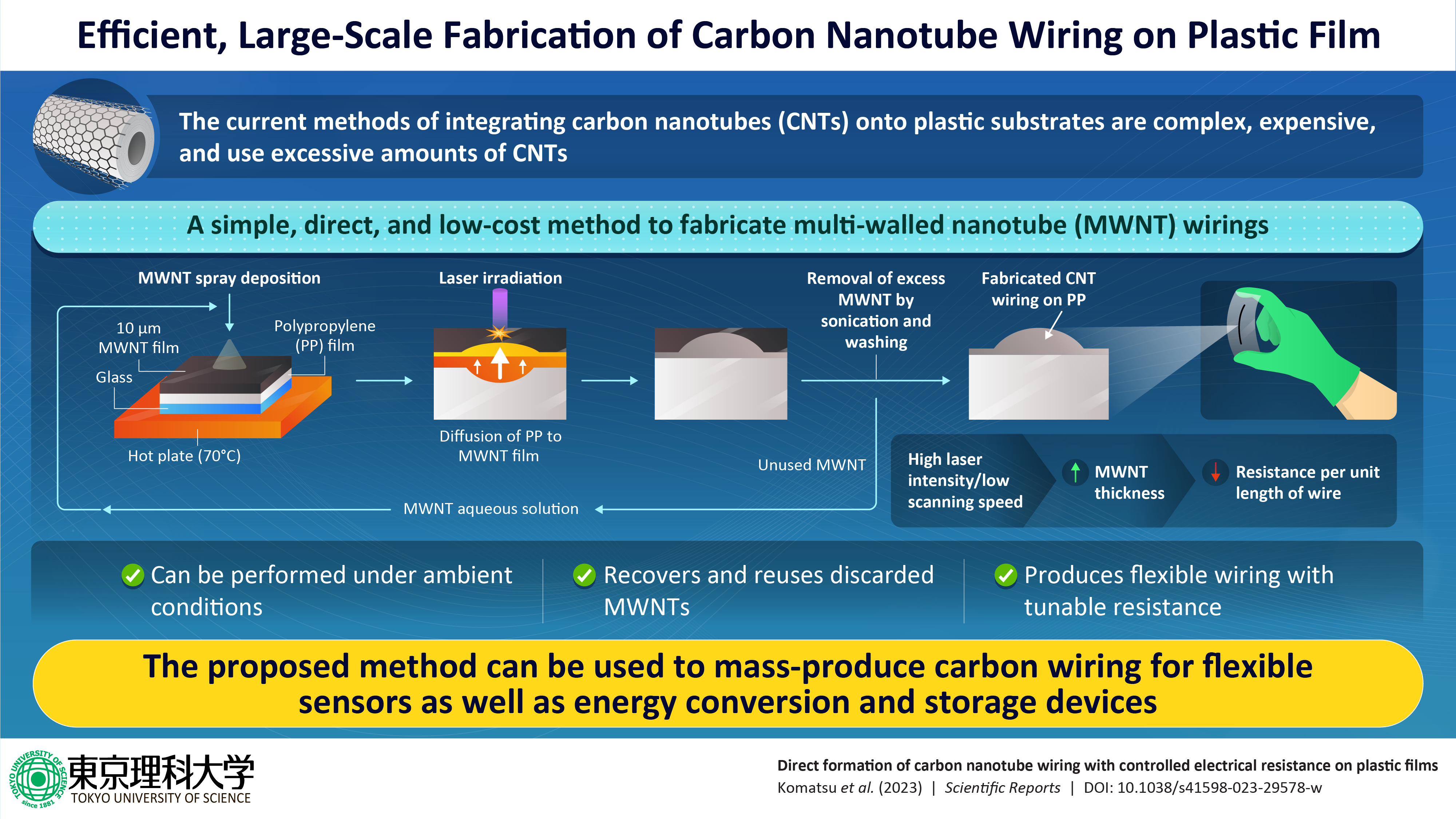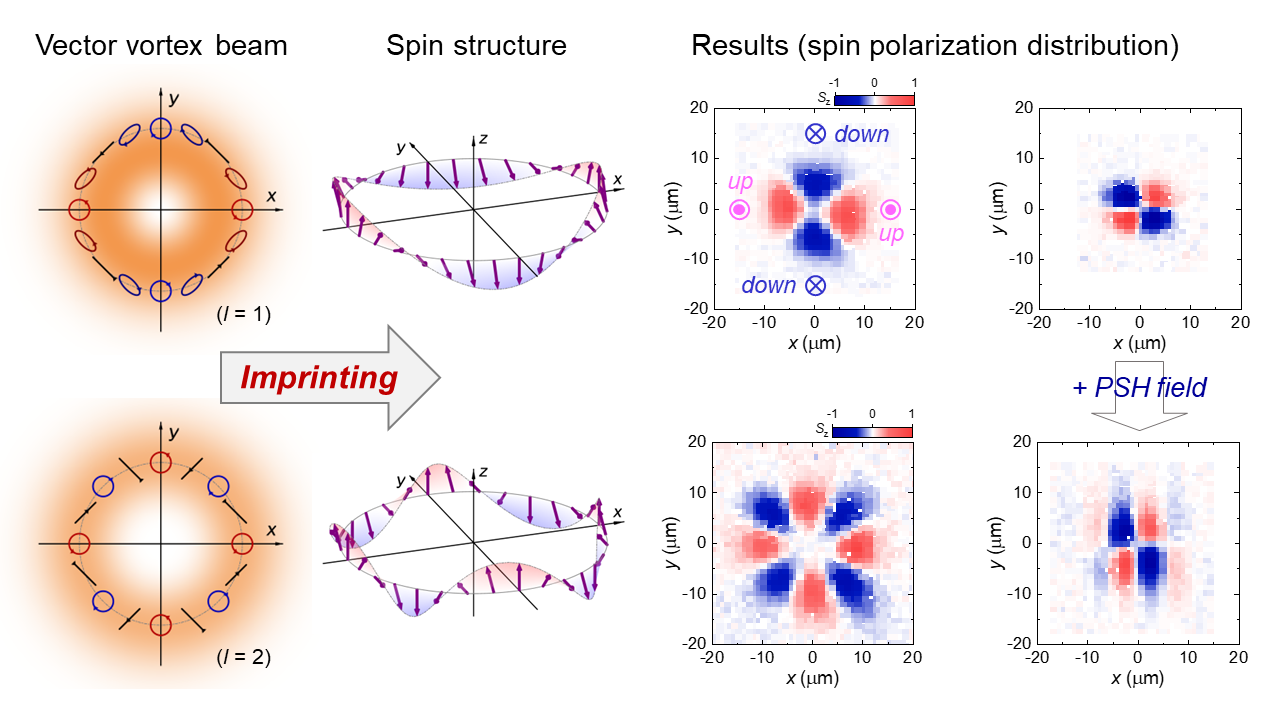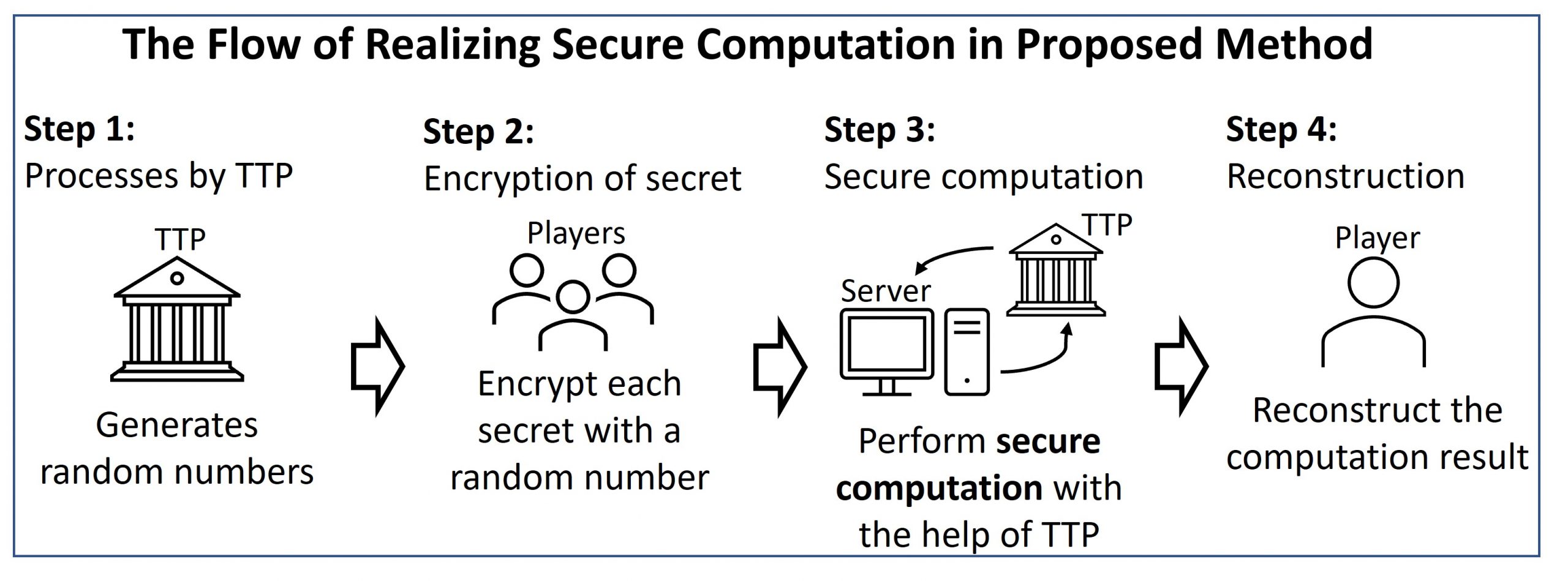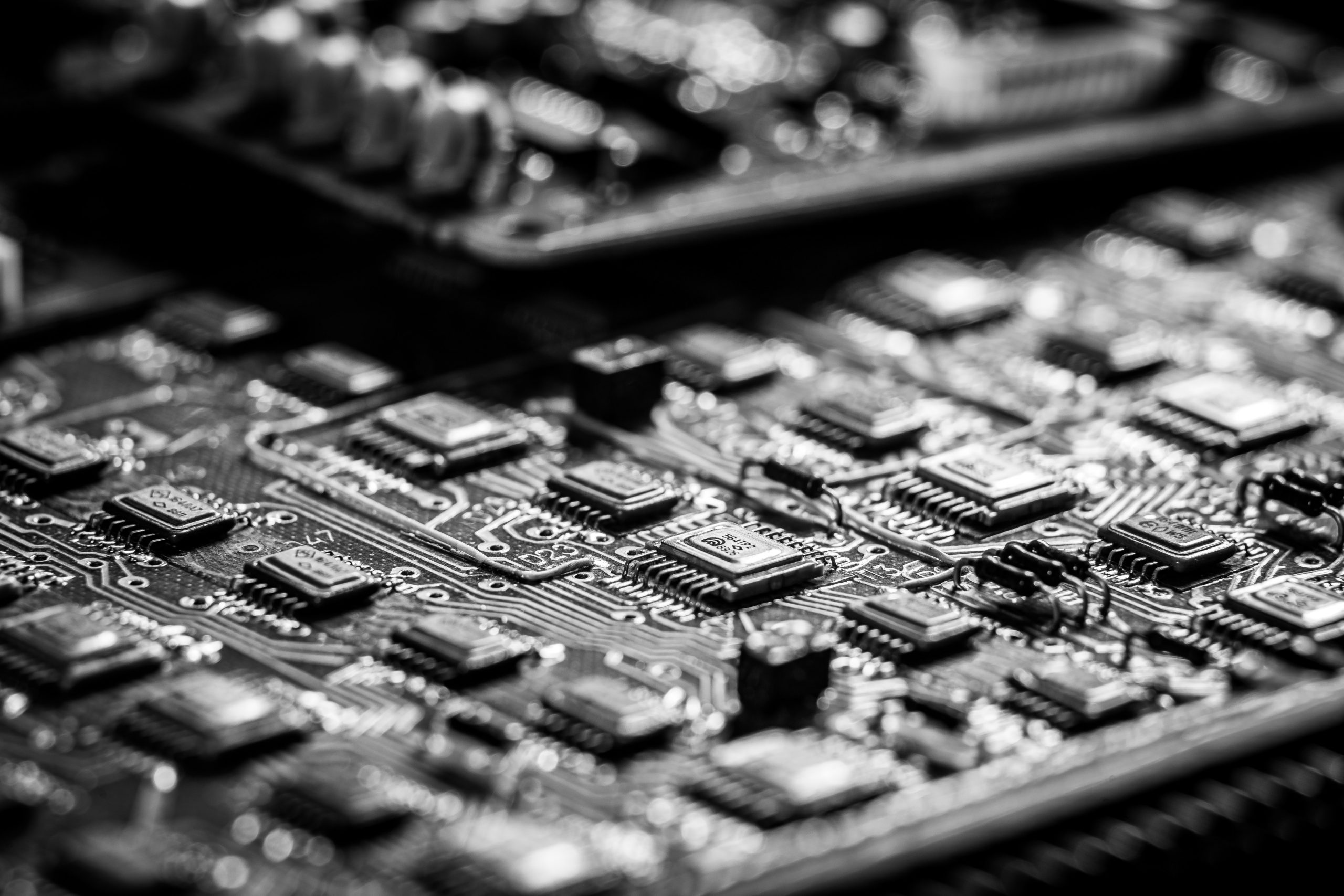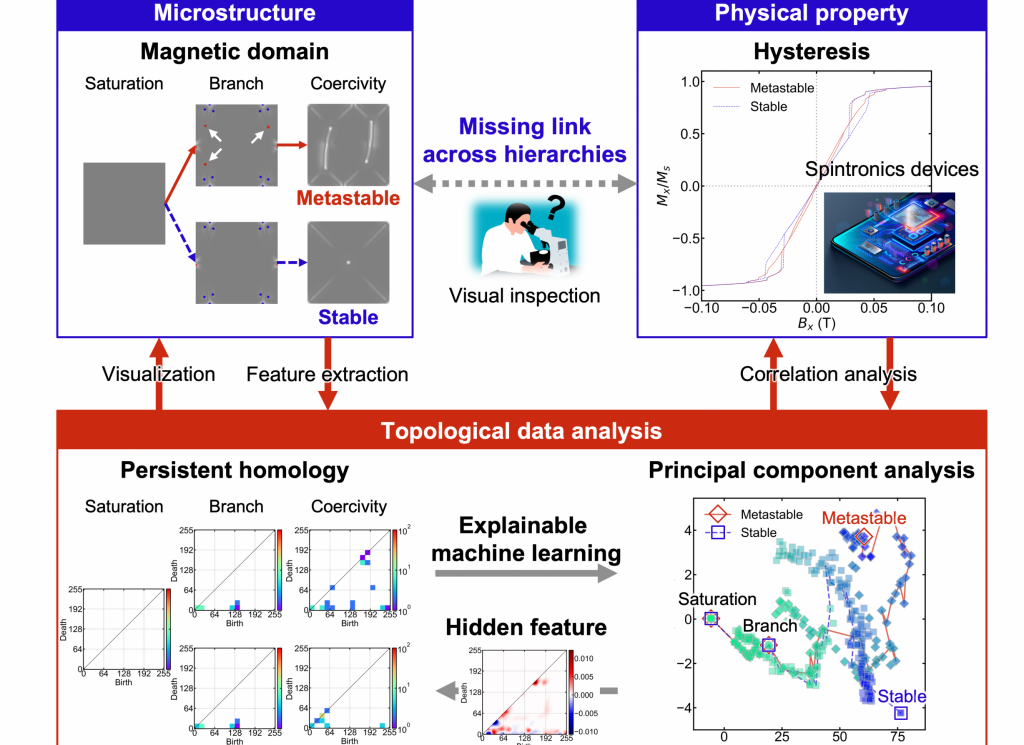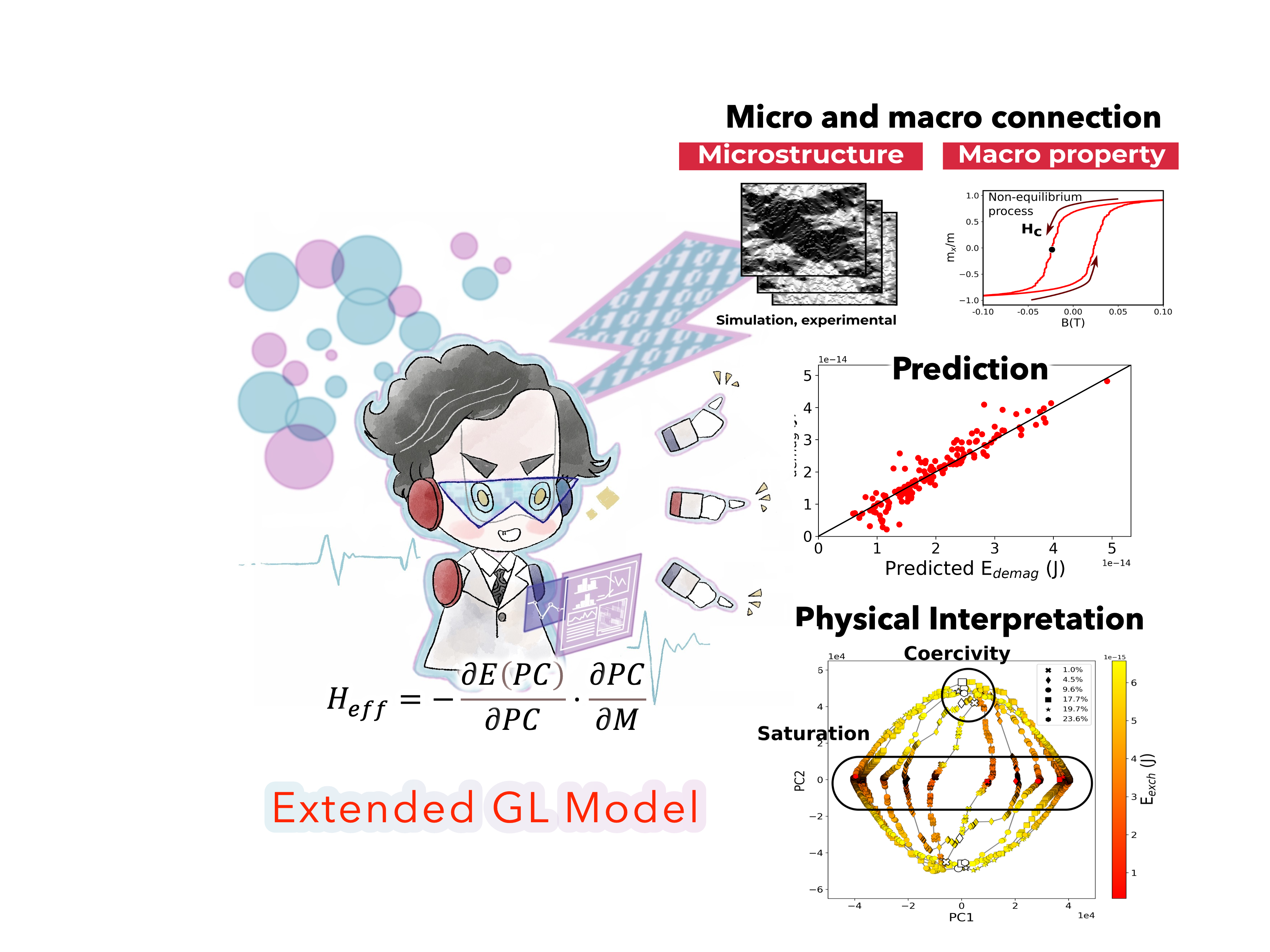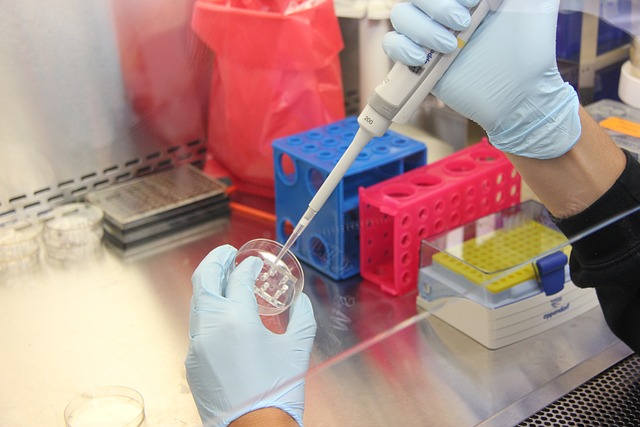The proposed method produces wiring suitable for developing all-carbon devices, including flexible sensors and energy conversion and storage devices
Researchers from Tokyo University of Science in Japan have developed an inexpensive method for fabricating multi-walled carbon nanotubes (MWNTs) on a plastic film. The proposed method is simple, can be applied under ambient conditions, reuses MWNTs, and produces flexible wires of tunable resistances without requiring additional steps. It eliminates several drawbacks of current fabrication methods, making it useful for large-scale manufacturing of carbon wiring for flexible all-carbon devices.
Carbon nanotubes (CNTs) are cylindrical tube-like structures made of carbon atoms that display highly desirable physical properties like high strength, low weight, and excellent thermal and electrical conductivities. This makes them ideal materials for various applications, including reinforcement materials, energy storage and conversion devices, and electronics. Despite such immense potential, however, there have been challenges in commercializing CNTs, such as their incorporation on plastic substrates for fabricating flexible CNT-based devices. Traditional fabrication methods require carefully controlled environments such as high temperatures and a clean room. Further, they require repeat transfers to produce CNTs with different resistance values.
More direct methods such as laser-induced forward transfer (LIFT) and thermal fusion (TF) have been developed as alternatives. In the LIFT method, a laser is used to directly transfer CNTs
onto substrates, while in TF, CNTs are mixed with polymers that are then selectively removed by a laser to form CNT wires with varying resistance values. However, both these methods are expensive and have their unique problems. LIFT requires expensive pulsed lasers and preparation of CNTs with specific resistance values, while TF uses large amounts of CNTs that are not
utilized and go to waste.
Aiming to develop a more simple and inexpensive approach, Associate Professor Dr. Takashi Ikuno along with his collaborators, Mr. Hiroaki Komatsu, Mr. Yosuke Sugita and Mr. Takahiro Matsunami at Tokyo University of Science, Japan, recently proposed a novel method that enables fabrication of multi-walled CNT (MWNT) wiring on a plastic film under ambient conditions (room temperature and atmospheric pressure) using a low-cost laser.
The breakthrough, published in the journal Scientific Reports on 08 February 2023, involves coating a polypropylene (PP) film with an MWNT film about 10 μm thick and then exposing it to a mW UV laser. The result is a conductive wiring made of a combination of MWNT and PP.
“This process enables the easy ‘drawing’ of wiring and flexible devices for wearable sensors without the need for complex processes,” highlights Dr. Ikuno.
The researchers attributed the formation of these wires to the difference in the thermal conductivities between the MWNT and the PP film. As the MWNT/PP film is exposed to the laser, the high thermal conductivity of the MWNT layer causes the heat to spread along the length of the wire, resulting in high temperatures at the MWNT–PP interface and lower temperatures elsewhere in the PP film. Directly below the laser, where temperatures are the highest, the PP diffuses into the MWNT film to form a thick PP/MWNT composite, while a thin PP/MWNT layer is formed at the edges of the laser where temperatures are relatively low.
The proposed method also allows the fabrication of carbon wires with different resistance values within the same process (without repeat transfer) by simply changing the irradiation conditions, thereby eliminating the need for additional steps. Exposing the PP/MWNT film to high laser energies, achieved either by low scanning speeds, a high number of laser exposures, or the use of a high-powered laser, produces thicker wires with a higher concentration of MWNTs. Consequently, the lower resistivity of MWNT and the thicker wire lowers the resistance per unit length of the wire (resistance is directly proportional to the ratio between the resistivity and the thickness of the wire).
By precisely controlling the exposure of the MWNT/PP film to laser light, the researchers successfully fabricated MWNT wires with a wide range of resistance values, from 0.789 kΩ/cm to 114 kΩ/cm. Moreover, these wires were highly flexible and maintained their resistance even when bent repeatedly.
Additionally, the method solved one of the pressing issues with current techniques, namely the inability of LIFT and TF techniques to reuse CNTs not utilized in the fabrication process. In the proposed method, MWNTs not incorporated into the PP film during laser irradiation can be recovered and reused, allowing for the creation of new MWNT wires with little to no change in resistance values.
With its simplicity, efficient utilization of CNTs, and the capability to create high-quality wires, the new method has the potential to realize large-scale manufacturing of flexible carbon wiring for flexible sensors and energy conversion and storage devices.
“We expect the process cost to be significantly reduced compared to that for conventional methods. This, in turn, will contribute to the realization of low-cost flexible sensors that are expected to have wide applications in large quantities,” concludes Dr. Ikuno.
***
Reference
Title of original paper: Direct formation of carbon nanotube wiring with controlled electrical resistance on plastic films
Journal: Scientific Reports




